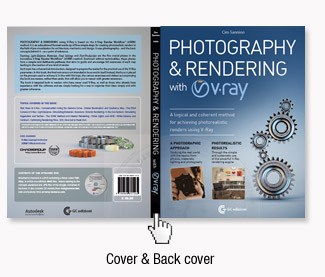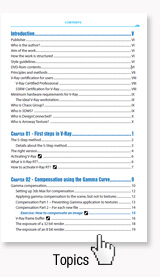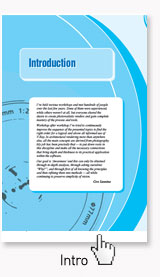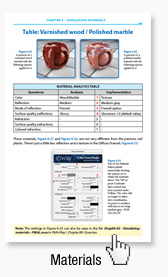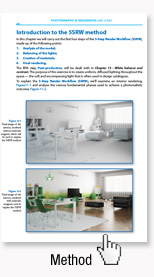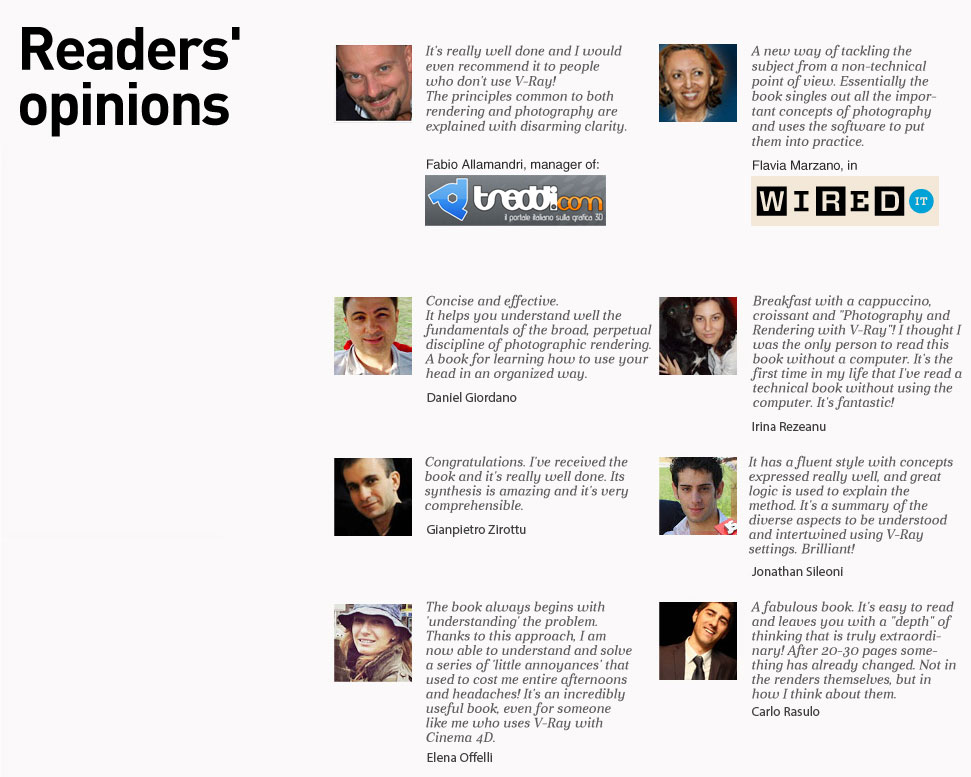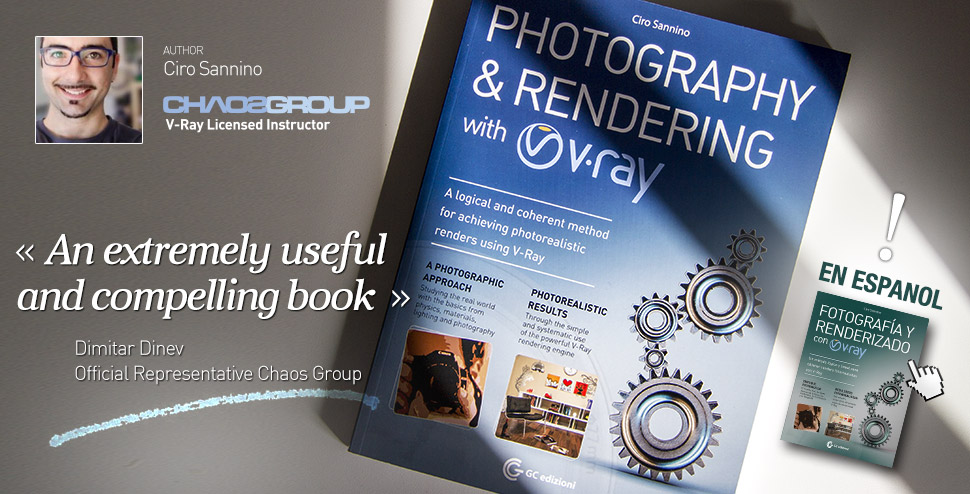
|
|

|
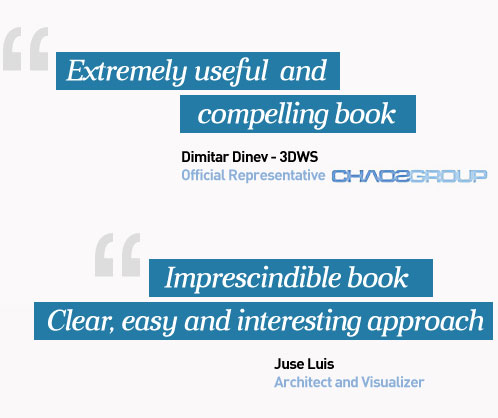
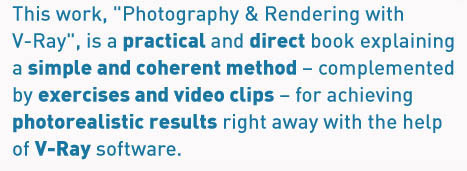
These days, achieving a photorealistic image is an important and at the same time rewarding goal for those who work in 3D graphics, but also those who need to use it more and more in their work as architects and designers. The close connection between photography, the handling of light and material physics is of crucial value in this work. These form the essential basis for setting the correct values in V-Ray.
Attaining photorealistic renders is very difficult without a basic knowledge of these topics, and is oftentimes left to chance.
All the concepts explained in the book, "Photography and Rendering with V-Ray", have been structured into 5 well-defined steps. While on one hand, these steps create a solid frame of mind, you can also apply them as a work method in all your 3D graphic work.
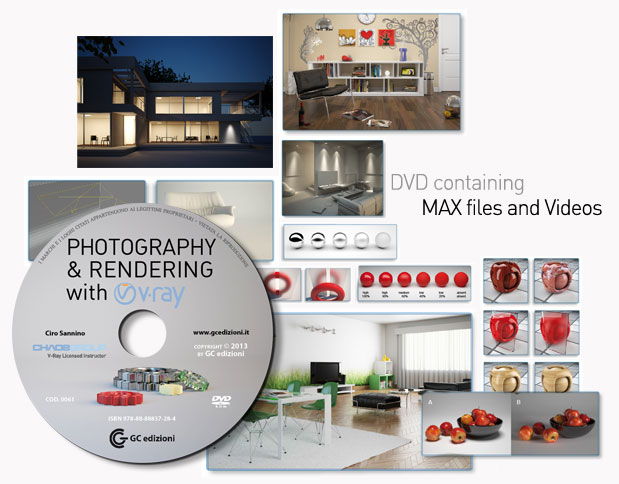
Contents of the DVD-ROM attached to the book:
Attached to the book is a DVD containing a folder called P&R−VRay, inside of which you will find .MAX files, videos relating to the concepts explained and .JPG files of the images contained in the book. It also contains 3D models from designconnected.com and textures from arroway−textures.com.

Generally, the book refers to V-RAY for 3DS MAX.
Despite this, many Rhino-c4D-Maya users have also found it excellent in helping them to understand the theory behind V-Ray and apply it to their software.
01 − First Steps in V−Ray
02 – Compensation with Gamma Curve
03 – Global Illumination and Irradiance Map
04 – The DSLR Camera in V−Ray
05 – Light Balance
06 – Simulating Materials
07 – Exposure
08 – Exterior Rendering
09 – The V−Ray Sun System
10 – Simulating Vegetation and Textiles
11 – The 5SRW in Interior Rendering
12 – Other Lights and HDRI
13 – White Balance and Contrast
14 – Optimizing Rendering Time
15 − SOS: How not to Freak Out
01 − First Steps in V−Ray
02 – Compensation with Gamma Curve
03 – Global Illumination and Irradiance Map
04 – The DSLR Camera in V−Ray
05 – Light Balance
06 – Simulating Materials
07 – Exposure
08 – Exterior Rendering
09 – The V−Ray Sun System
10 – Simulating Vegetation and Textiles
11 – The 5SRW in Interior Rendering
12 – Other Lights and HDRI
13 – White Balance and Contrast
14 – Optimizing Rendering Time
15 − SOS: How not to Freak Out

|
|

|

1. When will the book be ready?
The book is already available. Enter your email address in the form above to get all info for purchasing it right now!
2. I have V−Ray for Cinema4D, Rhino etc.. Is your book still suitable in these cases?
For practical applications I've used V-Ray for 3ds Max, which is very similar to that used in other software, so I refer to the 3ds Max interface. To answer your question, I think that the book is also okay for other versions of V-Ray, given that the logic is the same, with slight adjustments. The principles, however – which are the heart and soul of the book – are universal.
The book is already available. Enter your email address in the form above to get all info for purchasing it right now!
2. I have V−Ray for Cinema4D, Rhino etc.. Is your book still suitable in these cases?
For practical applications I've used V-Ray for 3ds Max, which is very similar to that used in other software, so I refer to the 3ds Max interface. To answer your question, I think that the book is also okay for other versions of V-Ray, given that the logic is the same, with slight adjustments. The principles, however – which are the heart and soul of the book – are universal.
3. Where will I be able to purchase it?
Enter your email address in the form above to receive all the info you need to purchase it online.
4. I don't see Caustics, V−Ray Fog Environment, AO, and Brute Force in the contents. Why not!?
"Photography & Rendering with V-Ray" is first and foremost a book about photography, whose goal is to enrich the world of rendering with various concepts and cues taken from photography. Caustics, volume lights, AO etc... are not topics related to photography. They are just simple tools about which hundreds of tutorials and videos already exist. It's much rarer to find books dealing with the deeper logic surrounding this topic.
Enter your email address in the form above to receive all the info you need to purchase it online.
4. I don't see Caustics, V−Ray Fog Environment, AO, and Brute Force in the contents. Why not!?
"Photography & Rendering with V-Ray" is first and foremost a book about photography, whose goal is to enrich the world of rendering with various concepts and cues taken from photography. Caustics, volume lights, AO etc... are not topics related to photography. They are just simple tools about which hundreds of tutorials and videos already exist. It's much rarer to find books dealing with the deeper logic surrounding this topic.
5. How much does shipping cost?
The shipping cost depends on your country. More info will be available after February 20.
6. Which version of V-Ray does your book refer to?
The book uses version 2.0, but all the material is equally valid for the previous version 1.5 – You'll need to have 3ds Max 2010 or later versions to use the files, examples and exercises.
7. Can we expect an e-book/pdf version?
For now, no. It will be up to the publishing house to decide in the future.
The shipping cost depends on your country. More info will be available after February 20.
6. Which version of V-Ray does your book refer to?
The book uses version 2.0, but all the material is equally valid for the previous version 1.5 – You'll need to have 3ds Max 2010 or later versions to use the files, examples and exercises.
7. Can we expect an e-book/pdf version?
For now, no. It will be up to the publishing house to decide in the future.

